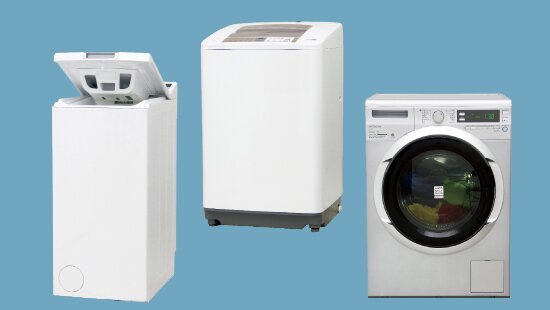A washing machine is one of those essential electrical appliances in almost every family. But how could consumer choose a suitable model from many different brands in the market, which come with different prices, functions and performance? The latest report from the Consumer Council comes to your aid.
The Consumer Council has tested 18 brands of washing machines including 9 front loaders (so called "Big Eyes") and 9 top loaders. The latter include 3 compact in width horizontal axis drum models (so called "European top loaders") and 6 wider vertical axis models (so called "Impellers"). The maximum washing capacity of these samples ranged from 6.5kg to 9kg and priced from HK$3,380 to HK$9,690.
Conducted by a European Laboratory commissioned by the Consumer Council and with reference to the international standard IEC60456, the test focused on different aspects of washing machines, including washing performance (45%), environmental performance (30%), ease of use (10%), noise level and reduction of vibration (5%), door design (5%) and water leakage test (5%). The result showed that the overall performance of the samples are quite close to each other. On a five-point scale, 12 models scored 4 points while the remaining six scored 3.5.
Of the 3 types of washing machines under testing, each was found to have its own strengths and weaknesses. Consumers are therefore suggested to make their choice according to their needs. For instance, front loaders are generally more water efficient than the others and enable users to utilize the space on the top. Although the water temperature function consumes more power, the power saving motor in some samples helps improve energy efficiency and the lifespan of the machine. Some distributors are therefore willing to offer a long warranty period of 10 years for the motor.
The design of the European top loaders are more compact and more water efficient, but washing capacity is smaller and use more power. On the other hand, impellers are more power-saving but consume more water, and occupy more floor areas too.
The cleaning performance test adopted a uniform method by having all samples washing for 3 cycles respectively cotton and synthetic clothes stained with sebum, carbon black with mineral oil, blood, chocolate and red wine. The result revealed that models equipped with heating function performed better in cleaning capability. Top performers included 1 European top loader and 4 front loaders. Since the 6 impellers came without water heating function, users are advised to use cold water detergent for this type of machines and allow more time for soaking to achieve better cleaning result.
For the spinning test, the 4 samples which claimed to spin at 1,400 rpm performed best. On the other hand, the sample claiming to spin at the highest rotational speed of 1,600rpm did not deliver the best spinning efficiency. This was probably due to the drum design.
Besides, the test also found that the washing time varied significantly amongst samples. For every kilogram of cotton and synthetic clothes, the quickest impeller sample took only 9 and 12 minutes respectively to complete the washing, rinsing and spinning cycle while the slower European top loaders and front loaders required 15 to 40 minutes to finish.
Safety is also a major concern of washing machines. In view of previous cases with kids getting drowned in washing machines, the Consumer Council specially tested the door design. The result showed that the European top loader and front loader samples have their doors firmly locked during the washing process. Among the impeller samples, however, only some of them have the door locked during the spinning process, and were thus rated poorer in terms of door design. When the top door was opened while washing started and during water filling, only two impellers suspended operation instantly, while the remaining samples continued to fill water into the tub.
The Council provides a few tips on how to care for the washing machine. Do not use excessive amount of detergent and clean the dispensers periodically. For consumers using front loaders, always clean and remove the dirt and resides inside the gasket or rubber seal. Check the machine's water hose and filter for signs of clogging when water filling takes longer the time than usual.
The Mandatory Energy Efficiency Labelling Scheme of Electrical and Mechanical Services Department (EMSD) will implement new energy efficiency grading standards on 25 November 2015, and is applicable to all washing machines with a washing capacity at or under 7kg. Taking the European machines as an example, the existing standard prescribes for Grade 1 the power consumption upper limit of 0.208 kWh in washing every kilogram of clothes per washing cycle. Under the new standard, this threshold will reduce dramatically to 62.5% of the previous limit, just 0.13 kWh. Under the new standard, Grade 4 machines are required to consume no more than 0.195 kWh of power which is higher than that for Grade 1 under the existing standard. By implementing the new standard, the Department aims to enable consumers to choose more energy efficient electrical appliances with a view to reduce power consumption in long run and contribute to sustainable development.
Once the new standard is implemented, consumers should take note on the energy efficiency label "U1" to precede the reference number for identification purposes.
The Consumer Council reserves all its right (including copyright) in respect of CHOICE Magazine and Online CHOICE (https://echoice.consumer.org.hk/).



